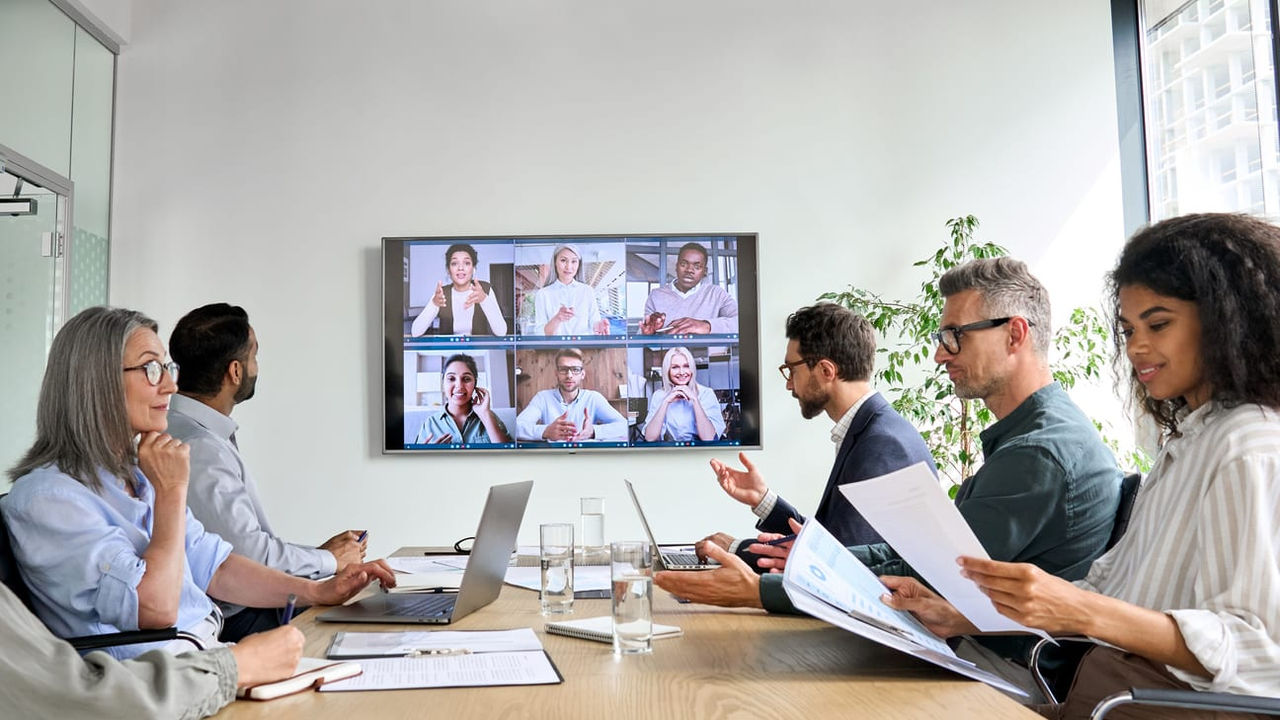As if the endless muting and freezing, the need for shelves lined with high literature, and the constant fear of a colleague wandering on screen unclothed were not enough to worry about, researchers have found that Zoom stifles creativity.
Meeting face to face produced more ideas, and ideas that were more creative, compared with videoconference discussions, according to lab experiments and a field study at a firm with offices around the world.
While the benefits of Zoom and other videoconferencing tools made them indispensable in the pandemic, the research suggests that heavy reliance on the technology comes at a cost to creative thinking.
"It's really important to have multiple creative ideas to draw from, and having a larger pot of creative ideas is going to increase your probability of success," said Melanie Brucks, an assistant professor of marketing at Columbia University in New York.
Brucks and her colleague Jonathan Levav at Stanford University started their investigation before the pandemic when managers reported having trouble innovating with remote workers. Brucks was skeptical that videoconferencing was a factor, suspecting that difficulties coordinating large, global teams online might be to blame instead.
To find out, the researchers recruited more than 600 volunteers who were paired up to tackle a creativity task either together in the same room, or virtually over Zoom.
The pairs had five minutes to come up with creative uses for a Frisbee or bubble wrap and a minute to select their best idea. Independent judges ruled that turning a Frisbee into a plate was less creative than using it to knock fruit from a tree, while using bubble wrap to send morse code messages was more creative than using it to protect a baby. Overall, those who worked over Zoom had 20 percent fewer ideas than those who met face to face.
The same effect was apparent in the real world. In a field study, the researchers analyzed ideas for new products generated by 1,490 engineers for a multinational company. The engineers, who were in Finland, Hungary, India, Israel and Portugal, were randomly paired and given an hour or so to brainstorm products either in person or over Webex videoconferencing. They then selected their best idea.
Writing in Nature, the researchers report that the engineers produced more ideas, and more innovative ideas, when working face to face. "They are not only generating a larger number of creative ideas, but their best idea is better," Brucks said. Virtual teams were just as good at selecting the best ideas from a bunch as those that met in person.
Things can easily go awry, however. For the field study, the engineers were at their best when brainstorming in the office. But the Polish arm of the company held its idea-generating session in a hotel, leading to "a notable preoccupation with the hotel catering's coffee and cookie station."
Further experiments in the lab revealed a link between greater creativity and how much people looked around the room and noticed unusual props, such as a poster of a skeleton and a bowl of lemons. Bruck suspects that on Zoom calls, people are focused on the screen and the person's face, a blinkering that constrains creative thought.
"Visual focus is a huge component of cognitive focus. When you're focused on the screen and filtering out the rest of the environment, that spills over into how you approach the task," said Brucks. "It's uniquely bad for creativity because it's inhibiting broader exploration."
The findings are food for thought as companies wrestle with the return to the office. Videoconferencing helps people collaborate across time zones and can slash the need for commuting. Meanwhile, it is unclear whether the impact on creativity holds for larger teams.
Brian Uzzi, professor of leadership at Northwestern University in Illinois, said the impact on the real world "could be huge," prompting a division of labor between face-to-face and virtual meetings that could "permanently reshape the office and work schedules." But he urged businesses to be cautious, because if virtual meetings are cheaper than in-person ones, they may still be more cost-effective.
Asked for tips, Brucks said people could save more creative tasks for in-person meetings, or turn off their camera when coming up with ideas. "I think it unlocks more creative thinking," she said.
This article was written by Ian Sample Science editor from The Guardian and was legally licensed through the Industry Dive Content Marketplace. Please direct all licensing questions to legal@industrydive.com.
Advertisement
An organization run by AI is not a futuristic concept. Such technology is already a part of many workplaces and will continue to shape the labor market and HR. Here's how employers and employees can successfully manage generative AI and other AI-powered systems.
Advertisement



